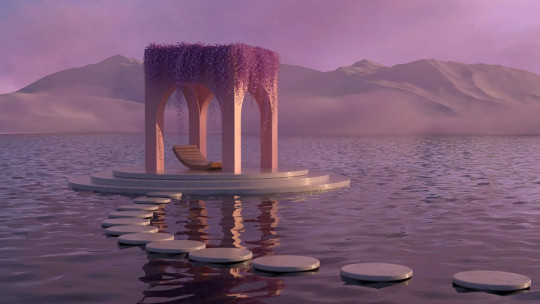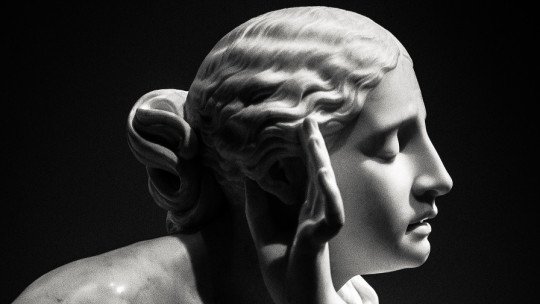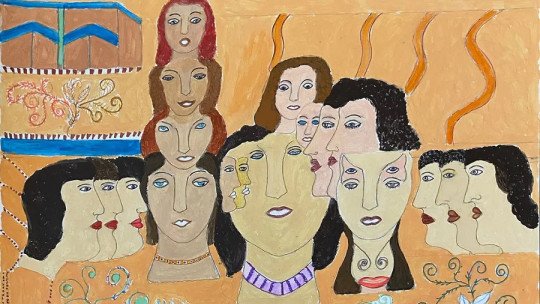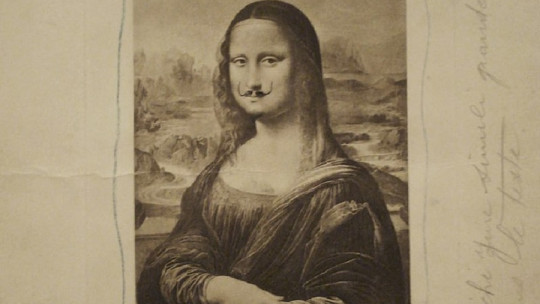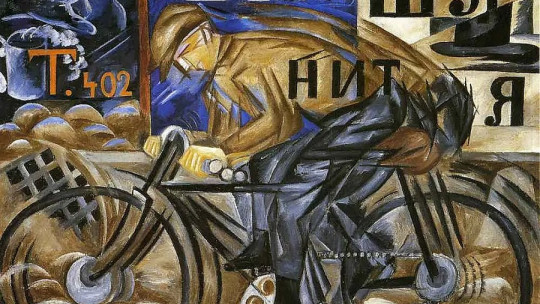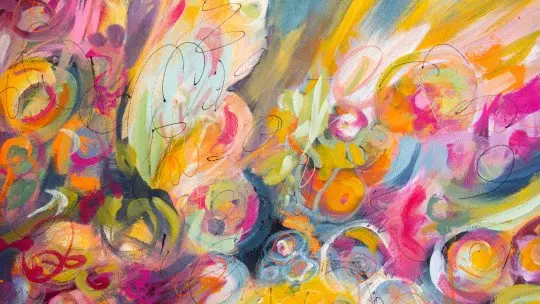The world is in constant movement, and events rush and create new situations, which require a new language and a new way of looking at them. Art, a genuine expression of the human being, could not be left behind in this sense.
Already in the 20th century, with the help of the artistic avant-garde, a new concept of artist had been born; the individual who not only owed nothing to anyone, but also rebelled against the world that, in a way, had created him. This feeling of rebellion shaped a need to restructure and renew the concepts of art and artistic creation. Thus, in the middle of the 20th century, popular art or pop art was born, which democratized the artistic object and put it at the service of the masses. From this new reality, new media art was born, destined to become the artistic standard-bearer of the early 21st century.
We propose an interesting journey through the transformation of art in the last century, which will allow you to better understand what it is and What are the characteristics of the so-called new media art or new media art?
What do we understand by art in new media or new media art?
We call new media art the art that incorporates new technologies, whether in its creation, in its use or in both situations. In English, the concept is called new media art; in this case, the new refers to the use of strictly cutting-edge technologies to differentiate this art from that linked to the rest of the technologies that are already fully integrated into our daily lives.
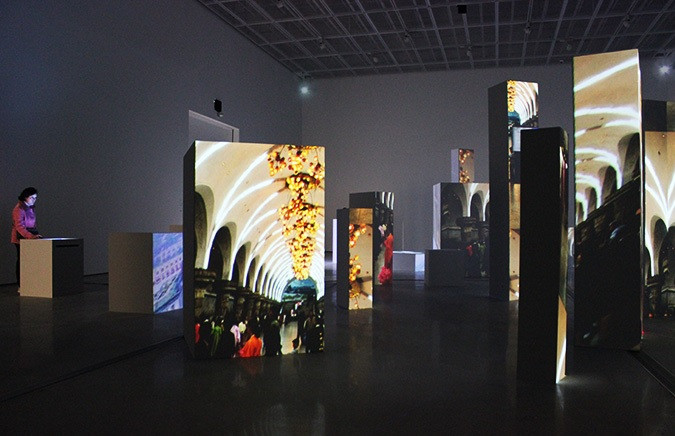
What is important is that new media art not only involves the increasing use of the most innovative technology, but, at a deeper level, it implies the absolute democratization of culture. In other words, the use of new techniques in the creation of works of art allows greater public access to them; not only to the result, but also to the creation process itself. This, as we will see, is nothing new; It had already been predicted since the technological revolution that marked the advent of the 20th century.
New media art proposes a new example of artist: one who works in collaboration not only with other colleagues, but also with the great mass of the public By often working with already existing images, the new media artist breaks with the idea that creation is something unique and linked to a single person. In the 1920s, and as we will see in the next section, Marcel Duchamp already did the same when he painted mustaches on a reproduction of the famous Monna Lisa.
The set of creations that this type of art covers is very broad. Throughout this article, we will analyze its most important manifestations; but first, let’s see what its most immediate historical background is.
The historical background: the avant-garde and the democratization of art
A movement or a style is not born spontaneously. Rather, it has a series of antecedents that, sometimes unintentionally, configure it and shape its meaning. Thus, we can say that Dadaism, Stridentism and Pop Art contain part of what, later, would be new media art. Let’s look at it below in more detail.
Dadaism or the denial of art
The oldest precursor of the so-called “new media art” is Dadaism or Dada movement, of which new media art collects some of its most essential characteristics; especially, formal elements such as collages and photomontages, but also satire and mockery
The Dada movement was born in 1916 at the Cabaret Voltaire, in the city of Zurich, Switzerland. Although it has been part of the so-called artistic avant-garde of the 20th century, in reality Dadaism intended the opposite. Through their absurd and often meaningless compositions, the creators of this movement launched an acid mockery at the corseted bourgeois world around them, which had ultimately led them to the horror of the First World War.
What does this avant-garde art have to do with new media art? Well, a lot, as we will now see. Suffice it to take as an example one of the most famous Dada works: the reproduction of La Mona Lisa by Leonardo da Vinci to which Marcel Duchamp one of the standard-bearers of Dadaism, added a pair of glossy mustaches.
The Dada movement was based on reproductions, montages and “deceptions” to give shape to its claim, as far back as 1916. In this way, this denialist movement was laying the foundations for future artistic expressions, such as stridentism and, above all, pop art, which are also among the precedents of new media art.
Mexican stridentism
Born in Mexico City in 1921, this movement is closely linked to the technological advance that marked the change from the 19th to the 20th century. During the first decades of the latter Periodical publications proliferate throughout the world, containing and drawing on the most innovative photographic and industrial advances
In this sense, it is the Mexican magazine Horizonte that becomes the vehicle through which Estridentismo promotes its aesthetic ideals, a fact that helped a lot when its members became part of the new government in one way or another. For example, Manuel Maples Arce, the founder of the movement, was secretary of the government of Veracruz.
As it could not be otherwise considering the date on which it was born, Mexican estridentism was completely adhered to the avant-garde. Through the pages of Horizonte and other publications, a heterogeneous group of artists and intellectuals (Maples Arce himself, but also the poet Germán List, the writer and diplomat Luis Quintanilla or the photographer Tina Modotti) demand the destruction of the “ancient” world. ” and the emergence of a new social and artistic reality.
Pop art or “popular art”
But perhaps the movement that has most influenced the emergence of new media art is that known as pop art, which emerged in Great Britain and the United States in the mid-20th century and which represented an authentic revolution in the art of media. creation. The essential thing about this type of art is that it is based on everyday consumer objects such as advertisements, comics and even food cans.
By its own definition, pop art (from “popular”) is essentially linked to the general public, and therefore goes against elitist and intellectual art. At this point it shakes hands with the avant-garde of the 20th century; Both Dadaism and Estridentismo, which we have commented on in the previous points, as well as many other movements that we will not go into, rebel against the official cultural theory, and to do so they use resources within the reach of the popular masses.
Pop art creates popular icons and multiplies them to infinity To do this, it uses industrial and mass-market techniques, such as large-scale printing. All of this allows the introduction of pop images in all homes, and in this way achieves the popularization of the art object.
As we see, this has a lot in common with the Internet and new media, which allow mass access to artistic productions. The lowering of the costs of computer products made it easier, already in the 1990s, for personal computer users to access easy software for image, sound and video processing, which allowed media art to give its first steps.
Types of new media art
The typology of artistic manifestations of new media art is very broad and, in some cases, one can be included within another. In this section we will only stop at the most characteristics.
1. Interactive art
This type of art has as its main characteristic (on the other hand, common in almost all manifestations of new art media) the very high degree of interaction with the public (hence its name). In a time when art is no longer conceived as an isolated element in which the artist creates and the public only contemplates , interactive art uses all the technological means at its disposal to create a network that encompasses artist and viewer. As Luis Andrade Baldeón states in his work Digital interactive art space: “Interactive art designates artistic practices in which the viewer participates directly in the creation of the work, not simply as an interpreter or recipient.”
We have, on the one hand, interactive art that is based on gears and levers that are actuated. It represents, of course, an early stage of interactive art. Secondly, we find interactive art based on electronic technology, which uses images, sound and computerized video to interact with the viewer. This type of interactive art is increasingly present in museums.
2. The net.art
Under this curious name we find all the creations made expressly for the Internet , whose origin dates back to the 90s of the 20th century, just when the global network was beginning to develop. One of the essential characteristics of a net.art work is that it must be created exclusively through elements of the network, such as hypertext, which allows information from different Internet sites to be linked.
Many artists used and use hypertext to restructure already existing works, following the so-called Hypertextual Narrative.
Some of the best-known net.art artists are Mark Amerika, art professor at the University of Colorado, or the artist duo Jodi.org, formed by Joan Heemskerk and Dirk Paesmans.
3. Artivism
The word is created from “art” and “activism”, and refers to the artistic manifestations that are created to protest against a fact or claim another In general, “artivists” use their creations to protest against politics and consumer society, and to do so they rely on the Internet and other media.
4. Augmented reality art
Literally, augmented reality art. As its name indicates, this type of art It uses computer graphics technology so that the viewer is immersed in a virtual reality The idea is to combine these virtual elements with physical elements, to create a unique experience. Augmented reality art has educational purposes as its basic purpose, and many museums and cultural centers already use it for their visitors.
5. The metaverse
For many, the future of art. Closely linked to augmented reality, the metaverse system immerses the user in a 3D virtual world in which he is just another element. There has been talk of the great possibilities that the metaverse could have not only as a recreational element, but also as an educational one.

